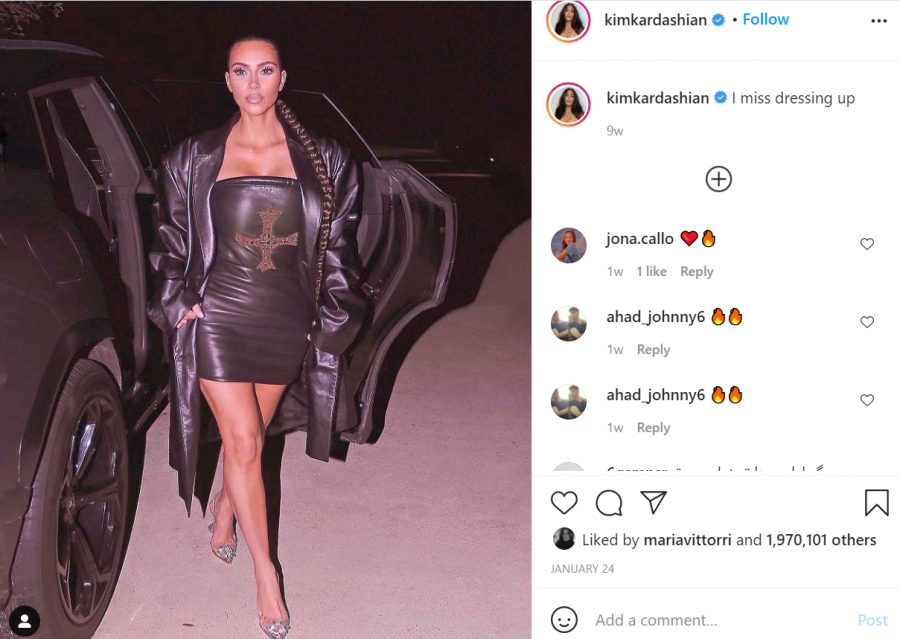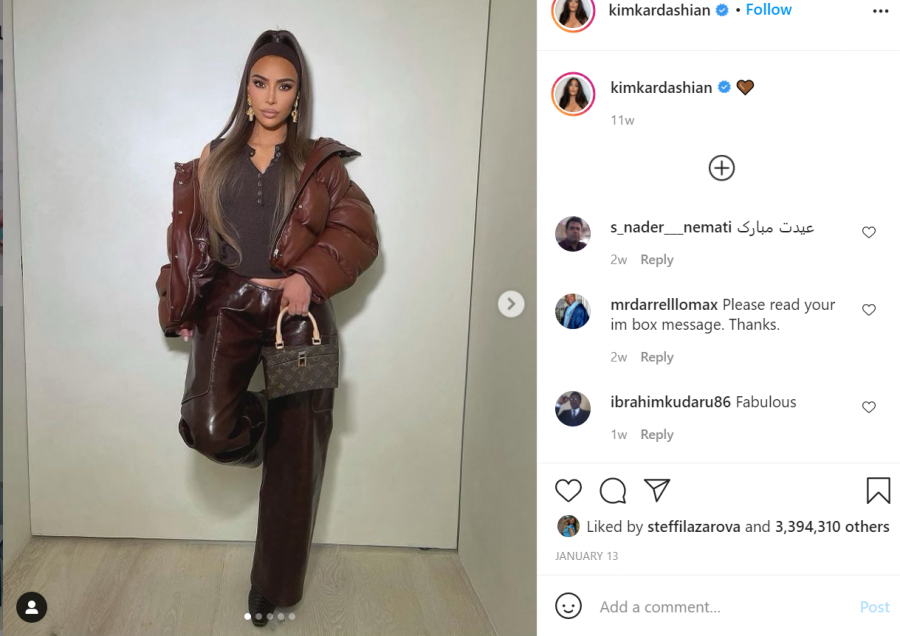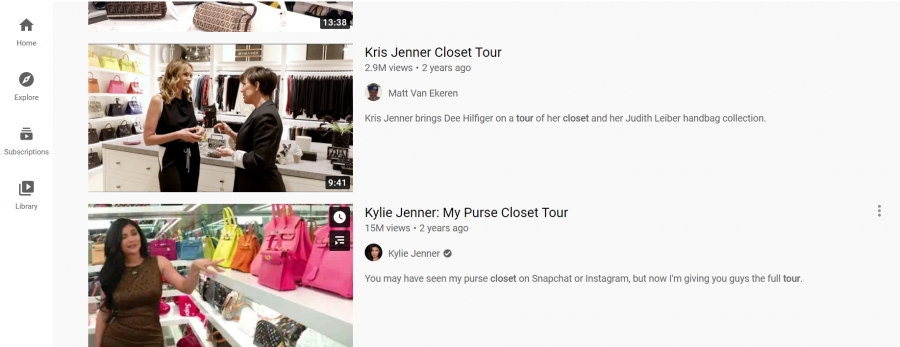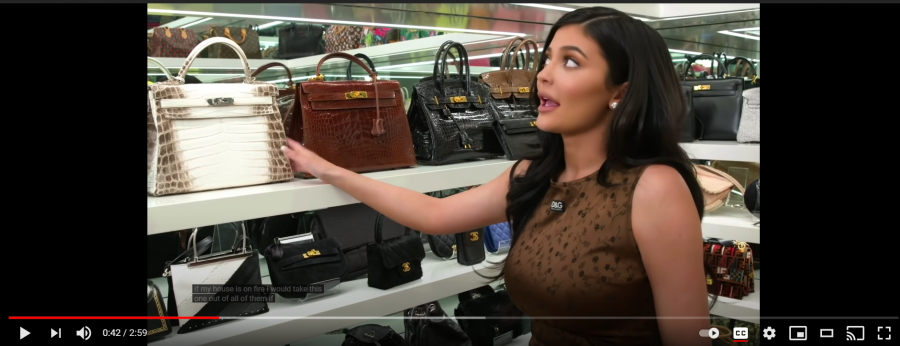
Celebrities' Flex Culture - Who Are You Flexing On?
Social media has turned into a battlefield for popularity, in which everyone wants to become the next Internet sensation. Influencers, Hollywood stars, and wealthy people flex on their social media accounts with photos of their material possessions, mainly by showing off their designer clothes, expensive cars, luxury houses, and exotic vacations. The materialistic and consumerism lifestyle portrayed by them serves as an acknowledgment of their richness and so-called entrepreneurial success that was instantly translated into building a certain celebrity status, which distinguishes them from the average person and maintains the status quo.
Their online behavior and identity construction not only separated them from the majority of social media users but can also be seen as a new cultural phenomenon. This behaviour has gained the attention of ordinary people and academic scholars, who identified their actions as showing off and leading to the exploration of these new online celebrity practices.
This paper analyses flex culture as a social and cultural phenomenon and distinguishes between the public and academic understanding. Moreover, the article aims to identify features of flex culture, as well as, the reasons behind why celebrities are flexing. This is done by looking at celebrities’ presentations of themselves online while analyzing the impact of flexing on people's behavior and lifestyle practices.
Flex culture origins
The word flex means ‘to bend' and it is derived from flexing, which means ‘capable of bending’. In the last decades, the masculine physique has been idealized more. People who want to emphasize their muscles will ‘flex’ them, causing them to become more noticeable (Gorton, 2020). Eventually, the term became mainstream and turned into a whole culture in itself.
In the public discourse, flexing has been a popular term in black culture as slang since the 1990s. In 1992 the rapper Ice Cube used it in his song “It Was a Good Day”: “Saw the police and they rolled right past me / No flexin’, didn’t even look in a n*gga’s direction as I ran the intersection.” (Dictionary.com, n.d.). However, the term flex gained mainstream popularity in 2014 with the song “No Flex Zone'' by the rapper Rae Sremmurd. The lyrics of the song are referring to a place where you can be yourself and not feel the need to compete with other people by constantly showing off.
Flexing originated from the rapper culture and it was popularized by it
The following year, the term gained attention again in the song “Flex (Ooh Ooh Ooh)” by the rapper Rich Homie Quan with the lyrics: “Cause I got a check, n*ggas wanna flex / Ain’t gotta flex but I got it, ooohh.” (Dictionary.com, n.d.). As it turns out, flexing originated from the rapper culture and it was popularized by it, however, in real life, people use it in different scenarios, mostly as an adjective for calling out a certain group of people.
Defining flex culture
The ways in which the public and the academic world frame the term 'flex' needs to be examined in order to understand this new cultural phenomenon. On social media, the meaning that people attach to flexing varies, but it always generally means the same. Flexing can be defined as showing "that you are very proud or happy about something you have done or something you own, usually in a way that annoys people" (Cambridge Dictionary, n.d.). But it is also defined as "the act of bragging about money-related things, such as about how much money you have, or about expensive possessions like designer clothing" (Urban Dictionary, 2020).
In modern life, flex culture is associated with both bragging and showing off mainly on social media platforms like Instagram and YouTube with material possessions that are expensive. This turned into the core value of the flex culture. At the same time, flex culture has been a topic of research by many academics in the field of human behavior and consumerism. The term that they use is not 'flex' or 'flexing', but conspicuous consumption.
With the further evolution of globalization, brands began a new economic stage by creating brand identities that provide consumers with attachment and identity. It is a well-known fact that people nowadays tend to buy a certain brand not because it sees its products as unique or necessary, but because they display the logo, and therefore the status that it creates for the customer. As Goldsmith stated: “one important motivating force that influences a wide range of consumer behavior is the desire to gain status or social prestige from the acquisition and consumption of goods” (O'Cass & McEwen, 2004).
In modern life, flex culture is associated with both bragging and showing off mainly on social media platforms like Instagram and YouTube with material possessions that are expensive
Status and conspicuous consumerism go hand and hand since individuals’ conspicuous consuming behavior of goods is driven by the desire to acquire a status and maintain it. Status consumerism is known as “the motivational process by which individuals strive to improve their social standing through the conspicuous consumption of consumer products that confer and symbolize status both for the individual and surrounding significant others” (O'Cass & McEwen, 2004). Thus, it is not surprising to connect the two since conspicuous consumption is referring to “the buying of expensive goods in order to impress people and show them how rich you are” (Oxford Learners Dictionaries, 2021).
Flex Culture as Popular Culture
The online cultural phenomenon of flexing is mainly associated with the behavior of celebrities, rappers, influencers, and vloggers on their social media accounts. Pictures of them wearing designer clothes and accessories or driving extremely expensive cars is a key feature of the culture (see Figure 1).
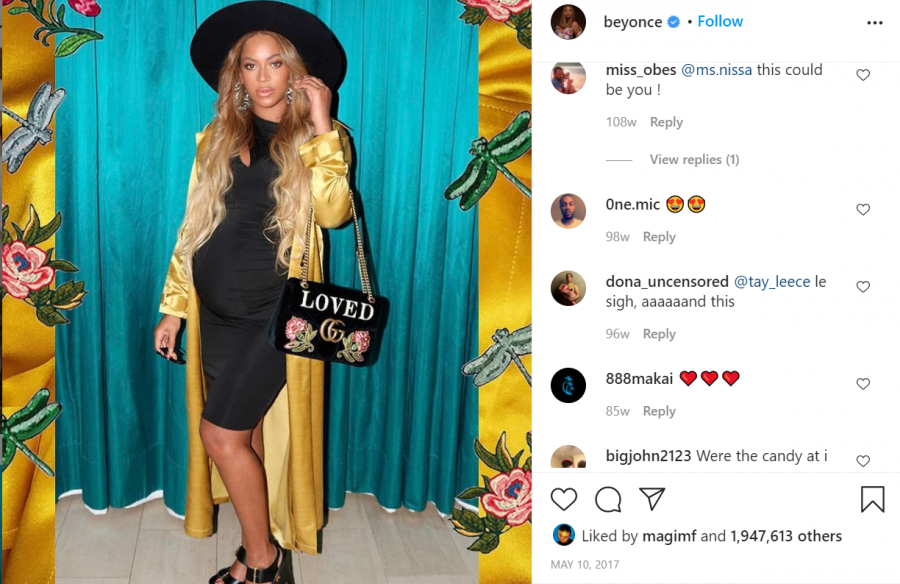
Figure 1: A post of Beyonce on her Instagram account.
The famous singer Beyonce posted this photo on Instagram, and as we can see in the picture, she is wearing a simple black dress (which is most likely a designer dress). However, the center of attention is her embroidered black purse that displays the big logo of Gucci. She is also wearing a golden trench coat, and the golden color is emblematic of the brand. Thus, Beyonce is showing off a Gucci-inspired look, where the brand’s logo is the detail that catches the attention first.
Figure 2: Kim Kardashian wearing Versace.
Another example of celebrity flexing is the Instagram account of Kim Kardashian (see Figure 2 and 3). Kim Kardashian as an Instagram celebrity and public figure is known for her taste in luxury brands. She loves to spend money on fashion items and show them off on social media on every occasion possible. Even though Kim Kardashian’s feed consists of mainly pictures of her wearing high fashion brands, she is not the only one since the whole Kardashian clan is known for their preference for expensive brands.
Figure 3: Kim Kardashian holding Louis Vuitton bag.
Celebrities are not just flexing on their social media accounts simply for the sake of a picture since that is how all of their pictures look. This is a specific way of consumption and projecting that consumption in the online space with their behavior resembling a new type of popular culture practice.
Generally, culture could be defined in three ways, however, in this case, the term points to culture as “a particular way of life, whether of a people, a period or a group” (Storey, 2015). Therefore, to speak of flex culture as popular culture means referring to these cultural practices as lived cultures or practices (Storey, 2015). These practices highlight the importance of celebrities’ taste as a central aspect of the culture.
Celebrities’ economy, taste, and flex culture
Celebrities are not just well-known names in the public sphere whose lives are topics of public interest and discussion, but they are perceived as the modern aristocracy. They are praised for their success, achievements, or lack of such, as well as financial status. Celebrity figures are looked at either as role models or as examples of inappropriate behavior. Either way, their status is that of a money-making machine for them and their industries. Celebrity’s economy has turned their persona into a commodity that is sold and consumed by the market, but also perceived as a ‘property’ by the industry is in the sense that they are “a financial asset to those who stand to gain from their commercialization” (Turner, 2013).
In order to stay relevant and continue making more and more money, celebrities have to maintain the status they have acquired, which translates into maintaining their celebrity taste. Taste is “the supreme manifestation of the discernment which, by reconciling reason and sensibility, the pedant who understands without feeling and the mondain who enjoys without understanding, defines the accomplished individual” (Bourdieu, 2013). Celebrities' social conditions and personal preferences need to resonate with “their cultural capital and the markets in which they can derive most profit from it”, otherwise they cannot convey profit and the social understanding of ultimate success (Bourdieu, 2013).
However, showing off by posting pictures on social media wearing Gucci or Prada might be enough to keep the status of celebrity, but it is not enough to grow their popularity, which eventually will increase their revenue. Different types of celebrities began uploading closet tour videos on YouTube, which led to a new popular practice in the flex culture (see Figure 4).
Figure 4: Celebrities’ closet tours on YouTube.
The videos of celebrities, rich people, or influencers showing their closets are circulating on YouTube with millions of views. They provide an inside look at what their wardrobes look like or in their case closet houses. What they call ‘closets’ are numerous rooms of clothes, shoes, and bags taking the space of a mini house in itself. These luxurious spaces are full of only designer items, some of which haute couture, worth millions of dollars.
However, what attracts the attention in these videos is the psychology that these people have toward their clothes and accessories. They all have an emotional connection with these pieces and cherish each one of them because of reasons such as how they got them or where they wore them. Furthermore, in most of these videos, the celebrity figures describe an imaginative situation of emergency, in which they will save one of their bags instead of a family member or a pet (see Figure 5). Not surprising is the bag that they all point to as their most valuable object. It is the famous Himalaya Birkin bag that is the most expensive bag on the market, and it is worth more than 300,000 dollars. The bag is the ultimate symbol of richness and losing it will equal losing their status.
Figure 5: Kylie Jenner saying which bag she will save in case of fire.
Why do celebrities, influencers, and rich people flex?
There is no doubt that flexing is a dominant practice in the lives of public figures, however, the reasons behind their behavior are intriguing. Carla Abdalla, a professor at the Armando Alvares Penteado Foundation in Brazil, studies the behavioral practices of celebrities and Instagram divas, and her researchers uncover the flexing ideology of digital influencers. Their crowded accounts with pictures of designer items are what they are mostly good at, which they describe as a ‘lifestyle’. As professor Abdalla shares: "When I ask them which kind of lifestyle, they talk about the consumption of designer clothes, gourmet restaurants, high-tech gadgets, trips around the world, and so on. Their expertise is the consumption." (Ellis, 2019).
Flexing is not only about keeping the status quo, but also about growing it further
Although celebrities and billionaires are obsessed with consumerism and materialism, there is a deeper motive that drives them to constantly buy goods for thousands of dollars, and post pictures with them online. The only way through which these people can distinguish themselves from the average person, and illustrate their success is through luxury designer clothes, huge mansions, and expensive cars. Thus, these material goods equal the success and richness that they want to demonstrate in order to maintain their celebrity status.
Furthermore, in the world of influencers and wealthy people, flexing is not only about keeping the status quo, but also about growing it further. Despite the fact that these people were called off many times on social media for displaying their lives of millionaires in front of everyone, and having a bad influence on younger generations, their photos and videos have millions of views and likes. This type of content attracts people for good or bad, leading to more and more followers and money. In a world where these people are accepted as commodities, flexing is part of the job, and for them is pure business.
The dark side of flex culture
For celebrities, flex culture could be accepted as part of their job and a necessary lifestyle for their success, but many of them do not understand what consequences their online actions have over their followers. A lot of their followers are teenagers and children, who are seeing these over-the-top lives and immediately want to have the same. Accounts with thousands and millions of subscribers draw the conclusions that the formula for success on social media is to wear designer clothes and drive expensive cars.
Figure 6: Lil Tay who can be seen as an example of the dark side of flex culture.
Lil Tay is an example of how children can become victims of flexing on social media. The nine-year-old kid has become popular on YouTube and Instagram with her videos showing a very 'lavish' lifestyle and bragging about being a billionaire. What turned her into a YouTube sensation was the slag language that Lil adopted as part of her Internet identity and the attitude, that she demonstrated towards other people and stars on the platform that viewers saw as a hilarious behavior from a nine-year-old child, but her videos quickly went viral on all social media platforms. One of her emblematic moves was to hold and throw a big stack of money in the air (see Figure 6). Eventually, it turned out that the whole image she was so desperately trying to create was a lie since all the mansions and properties that Tay claimed as hers were properties that her mother as a real estate agent was selling.
Tay is one of the many people who in their desire to become as popular as, for example, Tana Mongeau or Paul Logan, fabricate their lives and identities. Others like Lissette Calveiro take another approach by buying it through loans and eventually end up with serious financial debts. In 2018, the Instagram influencer Lissette Calveiro confessed that she ended up with 10,000 dollars in debt by trying to pursue the influencer dream. Calveiro admits spending more than 200 dollars a month on clothes and 1,000 dollars on designer bags because she could not be seen with the same outfit again in a photo (Young, 2018). Eventually, she understood her mistake and regretted her actions, but Calveiro is an example of the negative influence of flexing online, and how far people are willing to go to become the next Internet star.
The truth of flex culture
Whether framed as bragging and showing off or conspicuous consumption, flex culture gives an inside look into the lifestyle of celebrities and their online practices for gaining fame and transforming themselves into commodities that are sold online. Flexing as a new type of celebrities’ popular culture seems rather interesting and intriguing for the ordinary viewers, and especially for the fans of these public figures, however, the culture possesses its own risk for the individuals who want to become part of it. Creating an image of exotically and luxury is not a problem for the people who can afford it, but for those who cannot, it could lead to financial problems with the aim of achieving it.
References:
Bourdieu, P. (2013). Distinction: A social critique of the judgement of taste. Routledge.
Cambridge Dictionary (n.d.). Flex.
Dictionary.com. (n.d.). Definition of flex.
Gorton, B. (2020). What is the history of the newer usage of the word "flex" (as in "to show off")?. Quora.com.
Levy, L. (2021). The Making and Marketing of a 9-Year-Old Meme Machine. The Cut.
O'Cass, A., & McEwen, H. (2004). Exploring consumer status and conspicuous consumption. Journal Of Consumer Behaviour, 4(1), 25-39.
Oxford Learners Dictionaries. (2021). Conspicuous-consumption noun - Definition, pictures, pronunciation and usage notes.
Storey, J. (2018). Cultural theory and popular culture: An introduction. Routledge.
Turner, G. (2013). Understanding celebrity. Sage.
Urban Dictionary. (2020). Flexing.
Young, S. (2018). Woman's £7,000 debt reveals the dangers of trying to be 'Instagram famous'.
